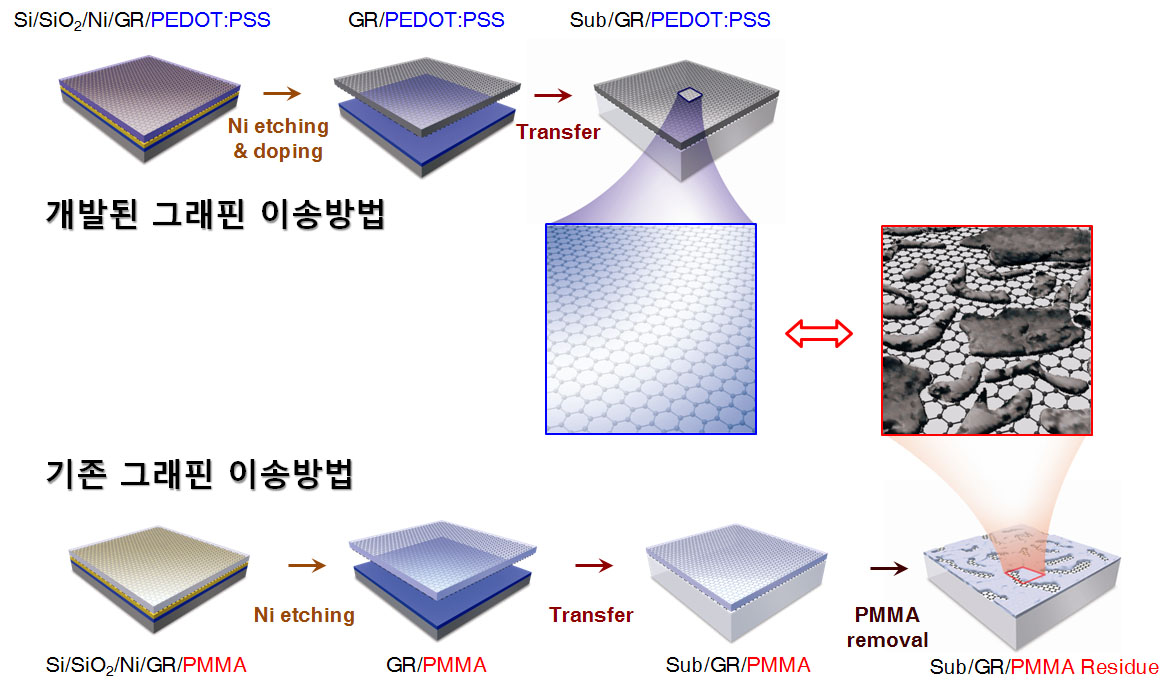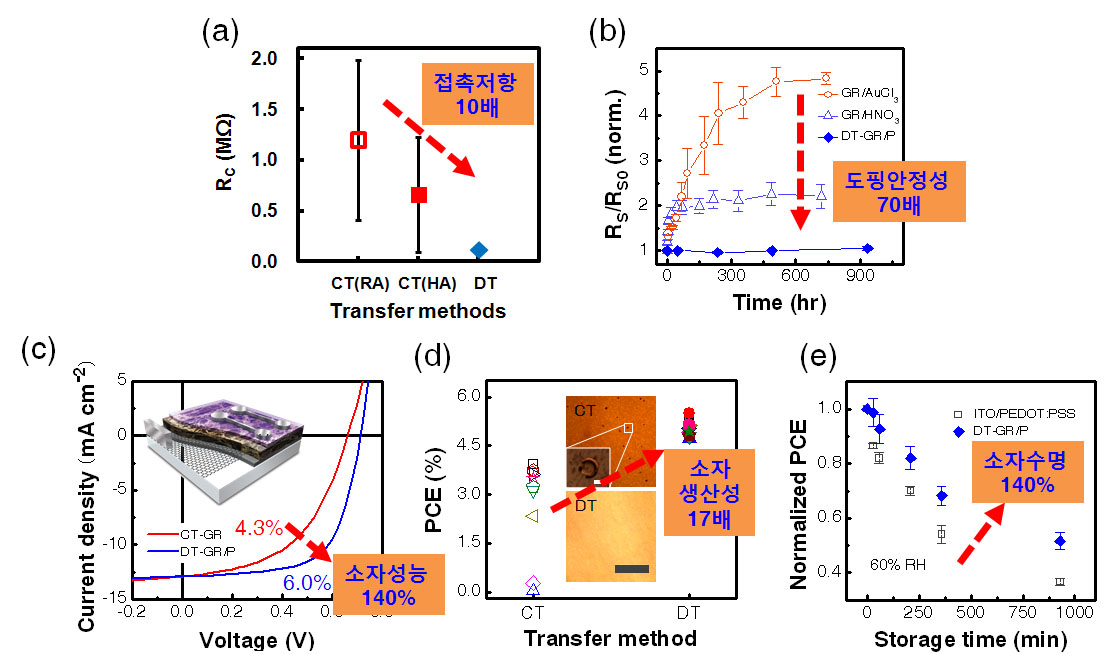Media Center
A multimedia mosaic of moments at GIST
GIST Excellence
New graphene conducting method to realize high-performance organic solar cells
- 김슬혜
- REG_DATE : 2014.04.11
- HIT : 1242
New graphene conducting method to realize high-performance organic solar cells -Published as back cover article by Advanced Functional Materials on April 2 - PEDOT:PSS used as new supporting thin film for graphene conducting □ A group of Korean researchers found solutions to two critical issues which have held back the commercialization of transparent graphene electrodes, by developing a new method to conduct large-surfaced grapheme film. This research outcome is expected to advance the commercialization of grapheme electrode materials to be used in flexible displays and organic solar cells. o This research was led by Professor Lee Kwang-hee (corresponding author) of the School of at Gwangju Institute of Science and Technology (GIST, President ž Young Joon Kim) and Dr. Kang Young-ho of Research Institute for Solar and Sustainable Energies(RISE), and joined by Dr. Lee Byoung-hun and Mr. Lee Jong-hun in the doctoral program in the Institute (both as joint leading authors). It was sponsored by the Senior Researchers Support Project of the Ministry of Science, ICT and Future Planning and the NCRC and the research paper was published as the back cover article of “Advanced Functional Materials”, an international journal of material science on April 2nd. (title: Graphene-conducting polymer hybrid transparent electrodes for efficient organic optoelectronic devices) □ Graphene conducts electricity better than copper and is stronger than steel, but is mechanically flexible. It is expected to be widely used for transparent electrodes, which are essential elements to flexible displays and organic solar cells. o A thin graphene film should be made clean with low-resistance in order to manufacture grapheme-based flexible, transparent electrodes, which requires the development of residue-free clean conducting method and stable doping technology. □ The research team found a solution to these technical issues by developing a new conducting method, which uses PEDOT:PSS, a conductivity plastic material, as the supporting thin film for grapheme conducting and doping. o The graphene-polymer hybrid electrodes produced by this new conducting method was found to have 10 times greater contact resistance and 40~100 times higher reliability of doping compared to the ones made by existing conducting method. o The research team applied the new electrodes to organic solar cells and found their efficiency went up by 140% compared to existing graphene electrodes and device productivity improved by 17 times. □ Not only that, the new method no longer needs the process to remove supporting thin film as opposed to the existing graphine conducting method, which helps to simplify production process. o Professor Lee Kwang-hee said “The new technology developed by the research team will serve as an important bridge way to the commercialization of graphene electrodes. I expect it will contribute to advance the commercialization of flexible displays and organic solar cells made of transparent, flexible electrodes in the near future.” 

